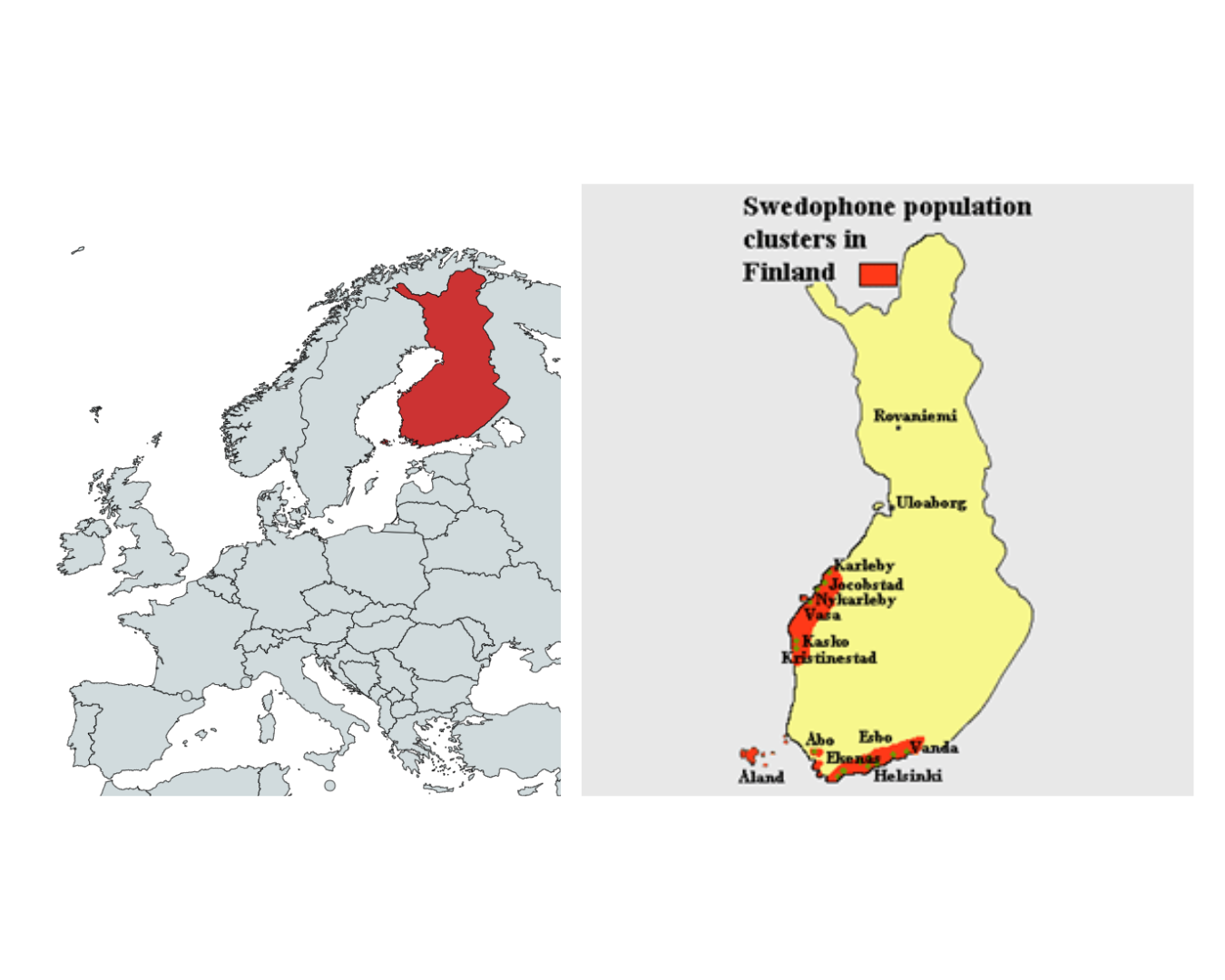In 2017, Finland had roughly 5.5 million inhabitants, known as Finns, and two main linguistic groups: Ethnic Finns (also Fennophones or Finnophones—who speak Finnish) and Finland Swedes (also Swedophones—who speak Swedish). Finland's population is composed mostly of Finnish speakers (89.9%); Finland Swedes, a numerical minority, account for 5.4% of the population. Other minority languages in Finland include Saami (0.03%), Tsigane or Romani (0,2%), Russian (0,6%) and Tatar.
In legal terms, Swedish isn't considered a minority language in Finland. The Finnish state is officially bilingual and simply sees the Swedish-speaking population as smaller; indeed, both languages have equal status.
Finnish is a non-Indo-European language belonging to the Uralian family, which includes Saami, Estonian, Hungarian, etc.). For foreigners, Finnish might seem a relatively exotic language, because of its distinctiveness from other European languages. As for Swedish, it is Indo-European and derived from the Germanic family of languages (English, German, Dutch, etc.). Romanis, for their part, number roughly 13,000 nation-wide, but their greatest concentration is in the Finnish southland's larger cities. country's; their language, Romani—called Romani Mirits in Finland—is Indo-Iranian, but the actual number of speakers is unknown. All Romanis speak Finnish as a second language.
Finland's new constitution provides for two national languages: Finnish and Swedish. In legal terms, there aren't official languages, though both of these national languages play that role in reality. Again, from a legal standpoint, Swedish has the same status as Finnish, and only Saami, Russian, Tsigane, Tatar, etc. qualify as national minority languages. On that note, Saami has acquired a special status among minority languages.

